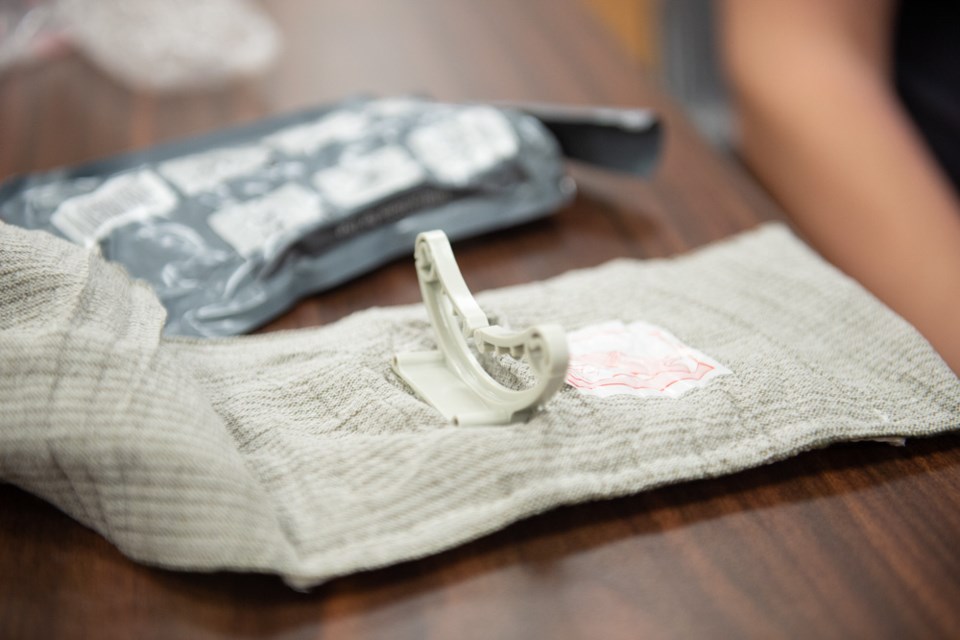Lampman ŌĆō HuttŌĆÖs Trucking in Lampman expanded its organic safety training into its own sideline division, and in doing so, is providing some significant out-of-the-box offerings.
Desmond Bilsky looks after HuttŌĆÖs Trucking Ltd.ŌĆÖs safety training division. HeŌĆÖs been doing it for 2 1/2 years. He used to work with Grimes Sales and Service for 10 years, Flying G at Kisbey for two years and then the RM of Brock, driving a grader for a year to get out of the oilpatch. But soon he was back, talking to Travis Hutt about coming to work for him
Over those years he initially worked as a truck driver, operating a winch truck and then he got his picker ticket, too, before shifting into safety training.
Having that field experience makes a big difference when doing safety training, as heŌĆÖs able to give examples of the right way and the wrong way to do things.
They found that getting the instructor qualifications made sense for HuttŌĆÖs Trucking, and then it made sense to start offering courses to other people.
ŌĆ£Then we expanded and expanded and got into all the courses now,ŌĆØ he said. ŌĆ£We started with Red Cross first aid.ŌĆØ
It took a while to get the H2S Alive instruction, because Energy Safety Canada, formerly Enform, was on a hiatus with instructors. They got several courses through one company like confined space, fall protection and power mobile equipment like skid steer, forklift and elevated platform.
ŌĆ£We donŌĆÖt teach anybody how to operate that. We teach the safe operation,ŌĆØ Bilsky explained. Examples include three points of contact and pre-use inspection.
They switched providers for those courses after going over customer feedback. Now they can tailor their courses more specifically to their clientsŌĆÖ needs. ŌĆ£Generic training is okay, but specific training is better,ŌĆØ he said.
As an example, he noted, ŌĆ£WeŌĆÖre doing some fall protection training. A lot of the stuff has gone to man basket work. Very little is horizontal lifeline work. Before we switched, if I had asked to take out horizontal lifeline, but add man basket, that would have been a ŌĆśno.ŌĆÖŌĆØ
Now they spend more time on basket work, because thatŌĆÖs what pickers do a lot of in the oilpatch.
In addition to the aforementioned classes, HuttŌĆÖs offers global ground disturbance, safety and supervision from Worksafe Saskatchewan, fire extinguisher, and one day workshops on dispute management and stress management, among other topics.
HeŌĆÖs an instructor for psychological first aid, but that class requires two instructors as it is a heavy day. It deals with day-to-day stress and dealing with emergencies. This is different from mental health first aid, which deals primarily with diagnosed mental health disorders.
Self-care plans are an important part of psychological first aid, so that when things go bad, you have coping mechanisms, as well as pointing people in the right direction to get help.
This will be offered down the road when they can find another instructor to help out.
Stop the Bleed
Recently Bilsky has been offering a new community program for free that came from the United States called ŌĆ£Stop the Bleed.ŌĆØ It arose from the high number of traumas, especially school shootings, in that country. ItŌĆÖs an hour-long presentation on how to effectively use a newer form of bandage and tourniquet to stop deadly bleeding. ╠²╠²
To that end, the program encourages the usage of an ŌĆ£Israeli bandage.ŌĆØ It looks like a large trauma bandage, but includes a stiff piece known as a compression bar. It acts as a fulcrum to apply much harder pressure than one can do otherwise.
If companies want presentations on Stop the Bleed, HuttŌĆÖs Trucking has been doing it on a cost-recovery basis.
ŌĆ£This course might make a difference in your life,ŌĆØ he said.
It wasnŌĆÖt an easy certification to get, either. He had to get approvals from both the U.S. Department of Homeland Security and Department of Defence in order to offer the training. Along these lines, heŌĆÖs looking at offering a similar course on dealing with an active shooter.╠²
╠²
╠²
╠²
╠²




